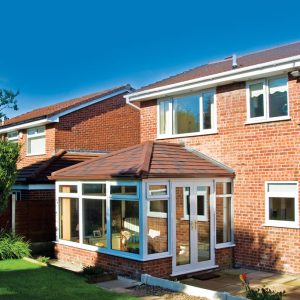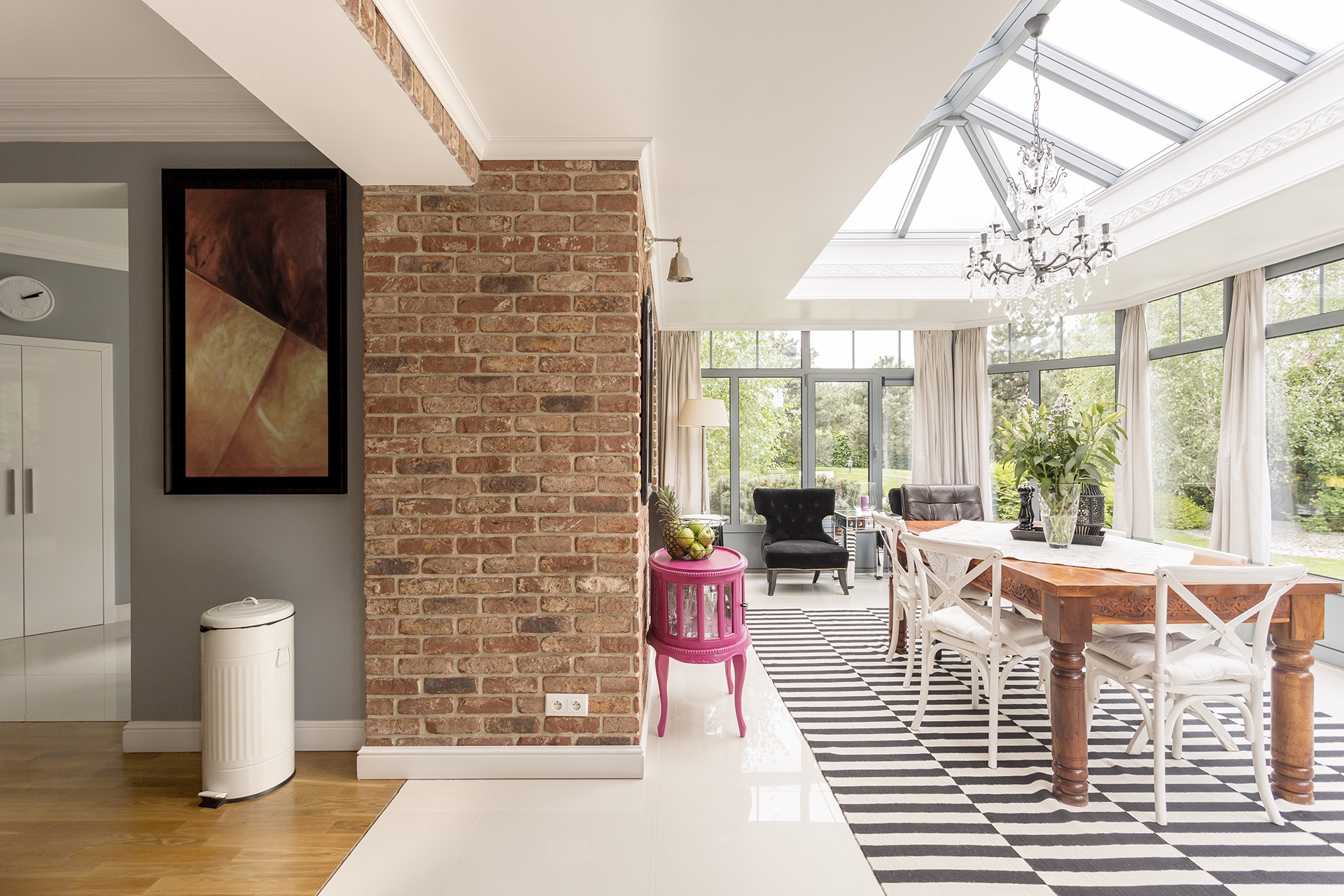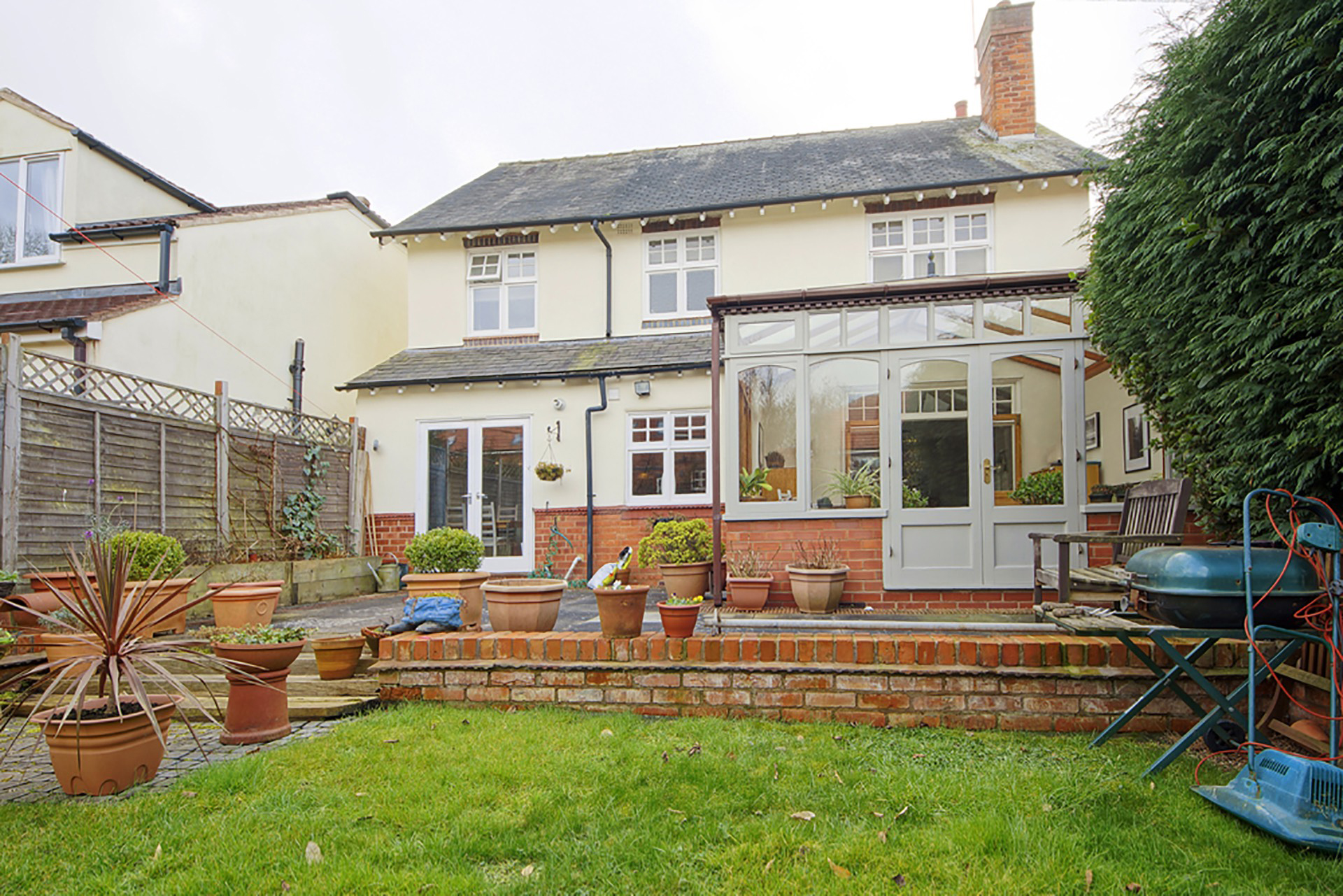Conservatories and extensions are popular options for homeowners seeking to expand their living space. While they share similarities in function, they have distinct differences.
Understanding these distinctions is crucial for anyone considering home improvements. Here at Heatguard, we provide a high-quality and durable range of conservatories for your property.
Our team of professionals can also help you determine which would be best suited for your home.
In this article, we will delve deeper into the question: When does a conservatory become an extension?

What is a Conservatory?
A conservatory is traditionally a glazed structure attached to the side or rear of a house, primarily designed to provide additional living space and enhance the connection with the outdoors.
It features a significant amount of glass, allowing ample natural light to enter the room. In contrast, an extension refers to an added room or space that seamlessly integrates with the existing structure of the house. Extensions can vary in size, shape, and purpose, ranging from single-story additions to multi-level expansions.
What is an Extension?
A house extension is a project that involves expanding the size of a home or property by adding extra rooms or living space. This can include building additional rooms, enlarging existing ones, or adding entirely new sections to the house. House extensions are undertaken to accommodate growing families, create more functional living spaces, or increase the property’s value.
House extensions can range from small-scale additions like a single room or a conservatory to larger projects such as two-story extensions or loft conversions. They require careful planning and adherence to building regulations and often involve architectural design and construction work to seamlessly integrate the new space with the existing structure.
Legal Distinctions:
The distinction between a conservatory and an extension often lies in legal regulations and planning permissions. In many regions, conservatories are subject to less stringent building regulations compared to extensions.
Conservatories are typically considered permitted developments, meaning they do not require planning permission if they meet certain criteria, such as size and placement.
Critical Factors in Determining Classification:
Several factors come into play when determining whether a structure is classified as a conservatory or an extension:
Purpose and Function:
- A crucial aspect is the intended use of the space. Conservatories are primarily designed as sunrooms or garden rooms, providing a space for relaxation, dining, or indoor gardening. On the other hand, extensions are often utilised as functional living areas, such as additional bedrooms, kitchens, or home offices.
Construction Materials:
- Conservatories typically feature a significant amount of glass and lightweight materials, emphasising transparency and openness. In contrast, extensions are constructed using a variety of materials, including bricks, concrete, and timber, to match the existing architecture of the house and provide structural support.
Accessibility:
- Consideration of accessibility is essential in determining the classification. Conservatories are often designed with easy access to the garden or outdoor space, featuring wide doors or sliding glass panels. Extensions, especially those intended for permanent living spaces, require compliance with building regulations regarding accessibility, including provisions for entrances and exits.
Structural Integration:
- The degree of structural integration with the existing house also plays a role. Conservatories are typically attached to the house via a separate frame or structure, maintaining a visual distinction from the main building. Extensions, on the other hand, are seamlessly integrated into the house’s structure, often sharing walls and foundations.

When Does a Conservatory Become an Extension?
The line between a conservatory and an extension can sometimes blur, especially with the rise of modern designs and construction techniques. In some cases, what begins as a conservatory project may evolve into an extension based on various factors:
Enhanced Functionality:
- Homeowners may decide to upgrade their conservatory to an extension to accommodate changing lifestyle needs. For instance, a conservatory initially intended as a casual dining area may be converted into a fully functional kitchen extension to create more space for cooking and entertaining.
Structural Modifications:
- Significant alterations to the original conservatory design, such as the addition of solid walls, roof insulation, or integrated heating systems, can transform it into an extension. These modifications enhance the structural integrity and usability of the space, blurring the distinction between the two.
Planning Permission:
- If the proposed changes to the conservatory exceed permitted development rights or require planning permission, it may be more practical to classify the structure as an extension. This designation ensures compliance with local building regulations and allows for greater flexibility in design and construction.
Conclusion:
In conclusion, the distinction between a conservatory and an extension hinges on various factors, including purpose, construction materials, heating, accessibility, and structural integration.
While conservatories offer a unique blend of indoor-outdoor living, extensions provide functional living spaces that seamlessly integrate with the existing house. Understanding the differences between the two is essential for homeowners embarking on home improvement projects, ensuring compliance with legal regulations and meeting their specific needs and preferences.

High-Quality Conservatory Prices
Get a highly functional and aesthetic conservatory installed on your property and transform its overall appearance.
If you have any questions regarding our products and services, please get in touch with a member of our team at 01246250600 or use our online contact form.
We look forward to planning your next project with you!
